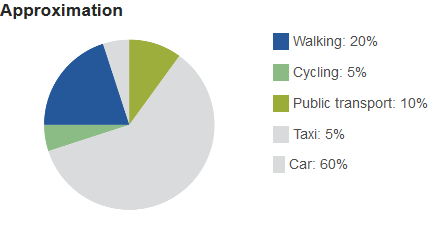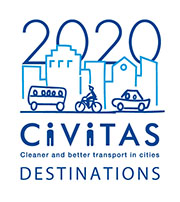kjilkjkljlljlkjkl
Living Lab - Rethymno

Rethymno is the third largest municipality of Crete with 63,000 habitants. It accommodates more than half a million tourists and attracts more than 1.5 million visitors on day tours and cruises annually. Therefore, the municipality is building up an integrated approach to face the rising challenges of both growing sectors: mobility and tourism. Rethymno has been a member of the Covenant of Mayors since 2011 and sustainable mobility is one of the strategic pillars of the Municipal SEAP. Rethymno is also involved in the European Reference Framework for Sustainable Cities. Through Destinations, Rethymno will demonstrate sustainable, affordable and reliable mobility solutions to address the intense seasonal tourist fluctuation, to reduce car usage, to achieve a shift in transport modal share and offer upgraded and innovative mobility services for citizens and tourists.
News & Events
City Factfiles
Municipality Area | 397 km2
|
Population
|
62.886 inh. (2011)
|
Population Density
|
158 inh./km2 |
Gender Balance
| 52% female 48% male
|
Avg Life Expectancy
| Female: 84.7 yrs Males: 79.4 yrs
|
Car Ownership Rate | 69.6% of the adult population 45.5%: one (1) car 20.3%: two (2) cars 3.8%: more than two cars
|
Accident Rate | 23 accidents (2015) 25 injures and 10 deceased
|
Climate | Mild Mediterranean with mild winters and hot summers
|
Rethymno Today
Modal Share

Transport Infrastructure
Car network
Approx. 650 km.
Cycling network
20 km. cycling network in the city of Rethymno.The cycling network in Rethymno prefecture includes 22 inter-regional cycling routes, 12 of them connect Rethymno with key attractions nearby.
Public transport network
Approx. 400 km.
Challenges
Behavioural change
- Reduce private car dependencies
- Address the position and inertia of the citizens/local businesses
- Engage key stakeholders to a sustainable growth model
- Inspire sustainable mobility habits
- Improve soft transport modes
Upgrading of transport system
- Address seasonal fluctuation due to tourism
- Attractive and convenient PT services
- Convenient access choices to main attractions
- Improved links between PT, cycling and walking networks
- Better coordination of inter-regional and airport transportation
Urban environment
- Reduce traffic congestion and high environmental impacts (GHGs, urban noise)
- Improve municipality image and functionality
- Improve convenience for citizens / visitors
- Design greener and safer public spaces
Rethymno after DESTINATIONS
Increased PT use: 20%
Increased use of public bikes: 10-15%
Reduction of congestion events: 10%
Increased satisfaction of residents and visitors: 30%
Accidents reduction: 20%
Behavioural change of local community and tourists towards sustainable modes of transport
Improved skills for drivers, including PT and freight







